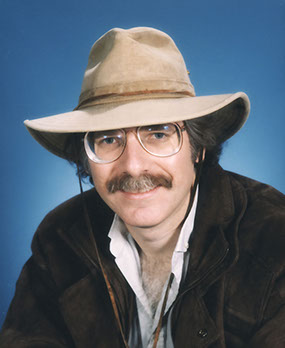Colloquia & Guest Speakers
Measuring Everything You've Always Wanted to Know About a Light Pulse
Dr. Rick Trebino, School of Physics, Georgia Institute of Technology
Monday, November 4, 2019
3 p.m.
Goergen 101

Abstract:
The vast majority of the greatest scientific discoveries of all time have resulted from more powerful techniques for measuring light. Indeed, our most important source of information about our universe is light, and our ability to extract information from it is limited by our ability to measure it.
Interestingly, most of the light in our universe remains inmeasurable, involving long pulses of relatively broadband light, necessarily involving ultrafast and extremely complex temporal variations in their intensity and phase. As a result, it is important to develop techniques for measuring, ever more completely, light with ever more complex submicron detail in space and ever more complex ultrafast variations in time. The problem is severely complicated by the fact that the timescales involved correspond to the shortest events ever created, and measuring an event in time seems to require a shorter one, which, by definition, doesn't exist!
Nevertheless, we have developed simple, elegant techniques for completely measuring such light using the light to measure itself and yielding a light pulse's intensity and phase vs. time and space. One technique involves making an optical spectrogram of the pulse using a nonlinear optical medium and whose mathematics are equivalent to the two-dimensional phase-retrieval problem - a problem that's solveable only because the Fundamental Theorem of Algebra fails for polynomials of two variables. In addition, we have recently developed simple methods for measuring the complete spatio-temporal electric field of an arbitrary, potentially complex light pulse without the need to average over multiple pulses.
Bio:
Rick Trebino received his B.A. from Harvard University in 1977 and his Ph.D. degree from Stanford University in 1983. His dissertation research involved the development of a technique for the measurement of ultrafast events in the frequency domain using long-pulse lasers by creating moving gratings. He continued his research during a three-year term as a physical sciences research associate at Stanford. In 1986, he moved to Sandia National Laboratories in Livermore, California. There he developed Frequency-Resolved Optical Gating (FROG), the first technique for the measurement of the intensity and phase of ultrashort laser pulses. In 1998, he became the Georgia Research Alliance-Eminent Scholar Chair of Ultrafast Optical Physics at the Georgia Institute of Technology, where he currently studies ultrafast optics and applications.
Prof. Trebino has received several prizes, including the SPIE's Edgerton Prize, and he was an IEEE Lasers and Electro-Optics Society Distinguished Lecturer. He is a Fellow of the Optical Society (OSA), the American Physical Society, the American Association for the Advancement of Science, and the Society of Photo-Instrumentation Engineers. His interests include adventure travel, archaeology, photography, humor-writing, and primitive art.
Location: Goergen 101
Refreshments will be served.
